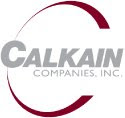
The idea behind Sweetgreen is simple: a sustainable salad and yogurt bar with a chic atmosphere and unique dining experience. In the Washington DC area, this approach has established Sweetgreen as a leader in fast-casual dining by combining the convenience of fast food with healthy, high-quality menu options. Due to its favorable position, the owners think the new Logan location will be their best store yet. Calkain is enthusiastic to be representing the partnership that owns the Sweetgreen Logan real estate.
The last twelve months have seen a surge in popularity of retail condominiums located in dense urban markets. Properties located in these areas, especially in the Washington DC urban core, are experiencing increased demand as they have prospered even in the face of the recession. As highlighted by RE Business, many individual investors are drawn to urban retail because the size and price points often allows them entry to prime urban markets previously beyond their reach.
They are also a popular choice among many 1031 investors who are seeking suitable replacement property. The retail condo units are typically NNN meaning the tenant is responsible for all expenses associated with the property. The properties are actually easier for both the landlord and tenant to manage because the services required to maintain the property are already contracted by the condominium at large. The tenant simply pays the retail unit’s portion of the condo, management and maintenance fees.
Another potential benefit to investors lies in the assessed value of the property and the weight given to improvements and land. Since the improvements are a greater part of the overall value in a condominium it is possible to depreciate a significant portion of those improvements on a 15 year schedule through a detailed cost segregation study. That means a stronger return and more cash in your pocket at the end of the year.
Please contact Calkain for more details.






